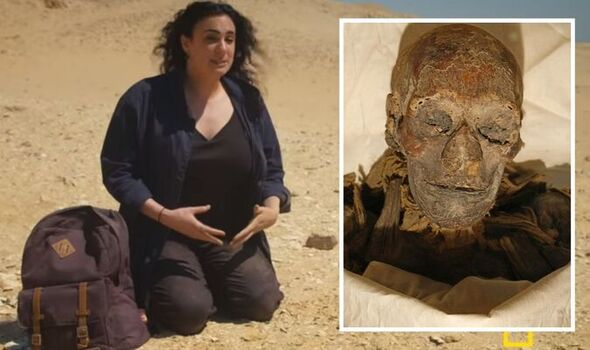CAIRO – 8 March 2022: Very few civilizations could leave behind as many amazing archaeological treasures and monuments as the ancient Egyptian civilization.
The Western civilizations knew their advanced ancestors in the late 19th century when English Egyptologist William Matthew Flinders Petrie, nicknamed the "Father of Egyptian Archeology", introduced the techniques of Science Archeology for the first time in the mid-1880s.
The National Geographic documentary "Egypt's Lost Treasures" explored the mummification ritual and its upbringing with AUC archaeologist Meredith Brand, who had always believed that mummification had roots much older than the ancient Egyptian civilization.

Meredith Brand told a story that took place in 1896 when local farmers were found buried under a thin layer of desert debris in the Gebelein area of Luxor, and they found a mummified body preserved in amazing detail.
On the upper part of the arm a tattoo of animals with horns was still visible, on top of which grew tufts of red hair. There was a hole in his left shoulder blade and a fracture of the rib under it as well. The analysis confirmed that the body was that of a male and that its spans back to more than 5000 years.
Brand confirmed that instead of the planned embalming, it was a natural accident. “There is no bandage that will preserve this mummy. So it seems that this was not intentional embalming. The sand preserved it. There was no ritual or magic or anything to do with it, just the drying power of nature,” said Brand in the documentary.
“Hundreds of years before the reign of the first pharaoh, this man lived around the fertile plains of the Nile. He was stabbed in the back and left dead sometime around his 20th birthday. He was buried in a small, shallow grave with simple objects of clay and covered with sand," stated Brand.
The desert sun and dry sand soon evaporated all the water from his body, preventing it from decomposing, and freezing it in time until it was discovered some 5,400 years later.
Given that archaeologists have found no explanation for the historical origins of embalming, Meredith Brand believes, according to the Daily Express website, that the practice may have evolved naturally.
“Natural mummies like the Gebelein men inspired the ancient Egyptians that their bodies too could last forever. It's a truly amazing discovery. It tells us where mummification began," concluded Brand.
Over time, the Egyptians began burying their dead in coffins to protect them from wild animals that roam the desert, but they realized that corpses decomposed into coffins when not exposed to the hot, dry sand. To ensure the preservation of the bodies, the ancient Egyptians embalmed their dead and then wrapped them in thin strips of linen.
The process lasted about 70 days and began by washing the body, removing the internal organs, and filling them with salt to remove all moisture. The dried organs were then wrapped in linen and placed in coffins.
Comments
Leave a Comment